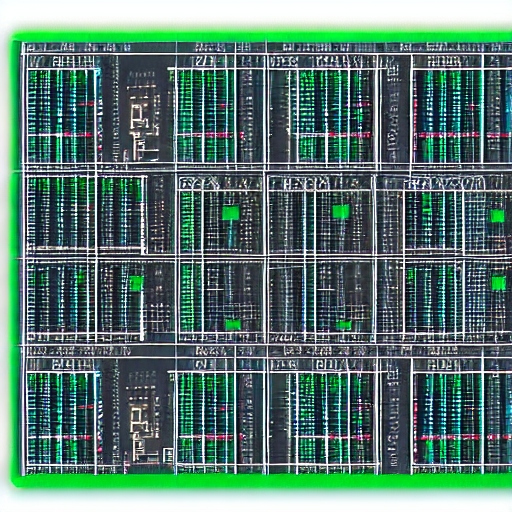Implementing the entire Transformer Encoder from scratch in TensorFlow and Keras is a complex task that involves multiple, layers, and attention mechanisms. However, I can guide you through the essential steps and provide a basic implementation of the Transformer Encoder. Keep in mind that this implementation is simplified and not suitable for production-grade applications.
Before starting, make sure you have TensorFlow and Keras installed:
pip install tensorflow
Let’s proceed with the implementation:
Step 1: Import the necessary libraries:
import tensorflow as tf from tensorflow.keras.layers import Input, Dense, LayerNormalization, Dropout
Step 2: Implement the Multi-Head Self-Attention Layer:
class MultiHeadSelfAttention(tf.keras.layers.Layer): def __init__(self, d_model, num_heads): super(MultiHeadSelfAttention, self).__init__() self.num_heads = num_heads self.d_model = d_model assert d_model % self.num_heads == 0 self.depth = d_model // self.num_heads self.WQ = Dense(d_model) self.WK = Dense(d_model) self.WV = Dense(d_model) self.dense = Dense(d_model) def split_heads(self, x, batch_size): x = tf.reshape(x, (batch_size, -1, self.num_heads, self.depth)) return tf.transpose(x, perm=[0, 2, 1, 3]) def call(self, V, K, Q, mask=None): batch_size = tf.shape(Q)[0] Q = self.WQ(Q) K = self.WK(K) V = self.WV(V) Q = self.split_heads(Q, batch_size) K = self.split_heads(K, batch_size) V = self.split_heads(V, batch_size) scaled_attention, attention_weights = self.scaled_dot_product_attention(Q, K, V, mask) scaled_attention = tf.transpose(scaled_attention, perm=[0, 2, 1, 3]) concat_attention = tf.reshape(scaled_attention, (batch_size, -1, self.d_model)) output = self.dense(concat_attention) return output, attention_weights def scaled_dot_product_attention(self, Q, K, V, mask=None): matmul_qk = tf.matmul(Q, K, transpose_b=True) dk = tf.cast(tf.shape(K)[-1], tf.float32) scaled_attention_logits = matmul_qk / tf.math.sqrt(dk) if mask is not None: scaled_attention_logits += (mask * -1e9) attention_weights = tf.nn.softmax(scaled_attention_logits, axis=-1) output = tf.matmul(attention_weights, V) return output, attention_weights
Step 3: Implement the Position-wise Feed-Forward Network Layer:
class PositionwiseFeedforward(tf.keras.layers.Layer): def __init__(self, d_model, dff, dropout_rate=0.1): super(PositionwiseFeedforward, self).__init__() self.ffn = tf.keras.Sequential([ Dense(dff, activation='relu'), Dense(d_model) ]) self.dropout = Dropout(dropout_rate) def call(self, x): x = self.ffn(x) x = self.dropout(x) return x
Step 4: Implement the Transformer Encoder Layer:
class TransformerEncoderLayer(tf.keras.layers.Layer): def __init__(self, d_model, num_heads, dff, rate=0.1): super(TransformerEncoderLayer, self).__init__() self.mha = MultiHeadSelfAttention(d_model, num_heads) self.ffn = PositionwiseFeedforward(d_model, dff) self.layernorm1 = LayerNormalization(epsilon=1e-6) self.layernorm2 = LayerNormalization(epsilon=1e-6) self.dropout1 = Dropout(rate) self.dropout2 = Dropout(rate) def call(self, x, training, mask=None): attn_output, _ = self.mha(x, x, x, mask) attn_output = self.dropout1(attn_output, training=training) out1 = self.layernorm1(x + attn_output) ffn_output = self.ffn(out1) ffn_output = self.dropout2(ffn_output, training=training) out2 = self.layernorm2(out1 + ffn_output) return out2
Step 5: Implement the complete Transformer Encoder:
class TransformerEncoder(tf.keras.layers.Layer): def __init__(self, num_layers, d_model, num_heads, dff, input_vocab_size, maximum_position_encoding, rate=0.1): super(TransformerEncoder, self).__init__() self.d_model = d_model self.num_layers = num_layers self.embedding = Embedding(input_vocab_size, d_model) self.pos_encoding = positional_encoding(maximum_position_encoding, self.d_model) self.enc_layers = [TransformerEncoderLayer(d_model, num_heads, dff, rate) for _ in range(num_layers)] self.dropout = Dropout(rate) def call(self, x, training, mask=None): seq_len = tf.shape(x)[1] x = self.embedding(x) x *= tf.math.sqrt(tf.cast(self.d_model, tf.float32)) x += self.pos_encoding[:, :seq_len, :] x = self.dropout(x, training=training) for i in range(self.num_layers): x = self.enc_layers[i](x, training, mask) return x def positional_encoding(self, position, d_model): angle_rads = self.get_angles(np.arange(position)[:, np.newaxis], np.arange(d_model)[np.newaxis, :], d_model) # apply sin to even indices in the array; 2i angle_rads[:, 0::2] = np.sin(angle_rads[:, 0::2]) # apply cos to odd indices in the array; 2i+1 angle_rads[:, 1::2] = np.cos(angle_rads[:, 1::2]) pos_encoding = angle_rads[np.newaxis, ...] return tf.cast(pos_encoding, dtype=tf.float32) def get_angles(self, pos, i, d_model): angle_rates = 1 / np.power(10000, (2 * (i // 2)) / np.float32(d_model)) return pos * angle_rates
Now you have implemented a basic version of the Transformer Encoder. You can use this layer in a larger model or experiment with different configurations and hyperparameters to build more sophisticated models for specific tasks like natural language processing or time series prediction with cryptocurrencies.
Keep in mind that the complete Transformer architecture also includes the Decoder and the attention mask to handle sequential data. Implementing the entire Transformer model from scratch involves additional complexity. If you’re interested in building a complete Transformer model, you can refer to research papers and more comprehensive tutorials on the topic.








